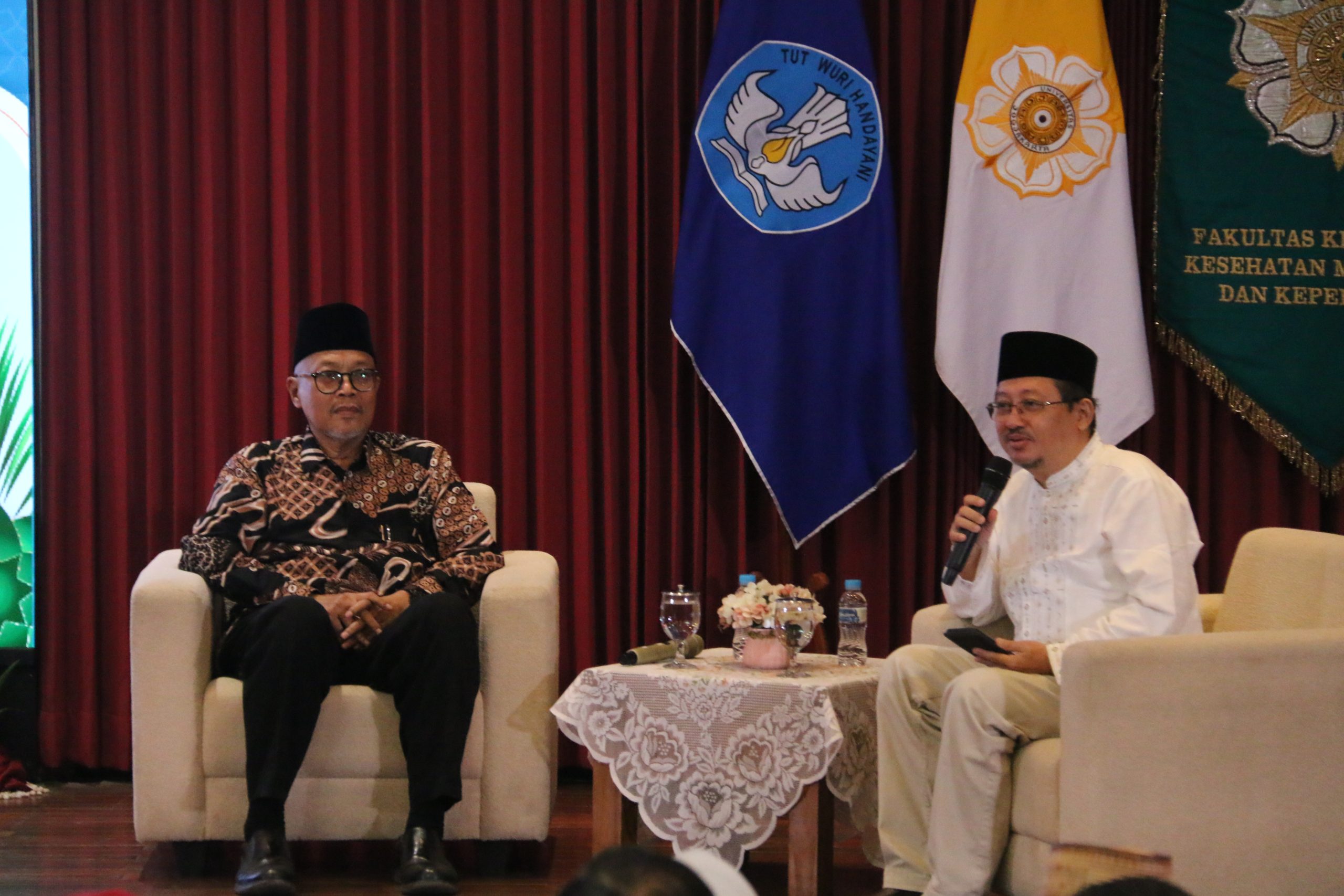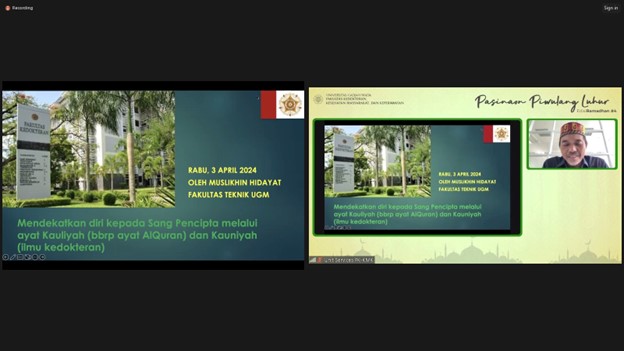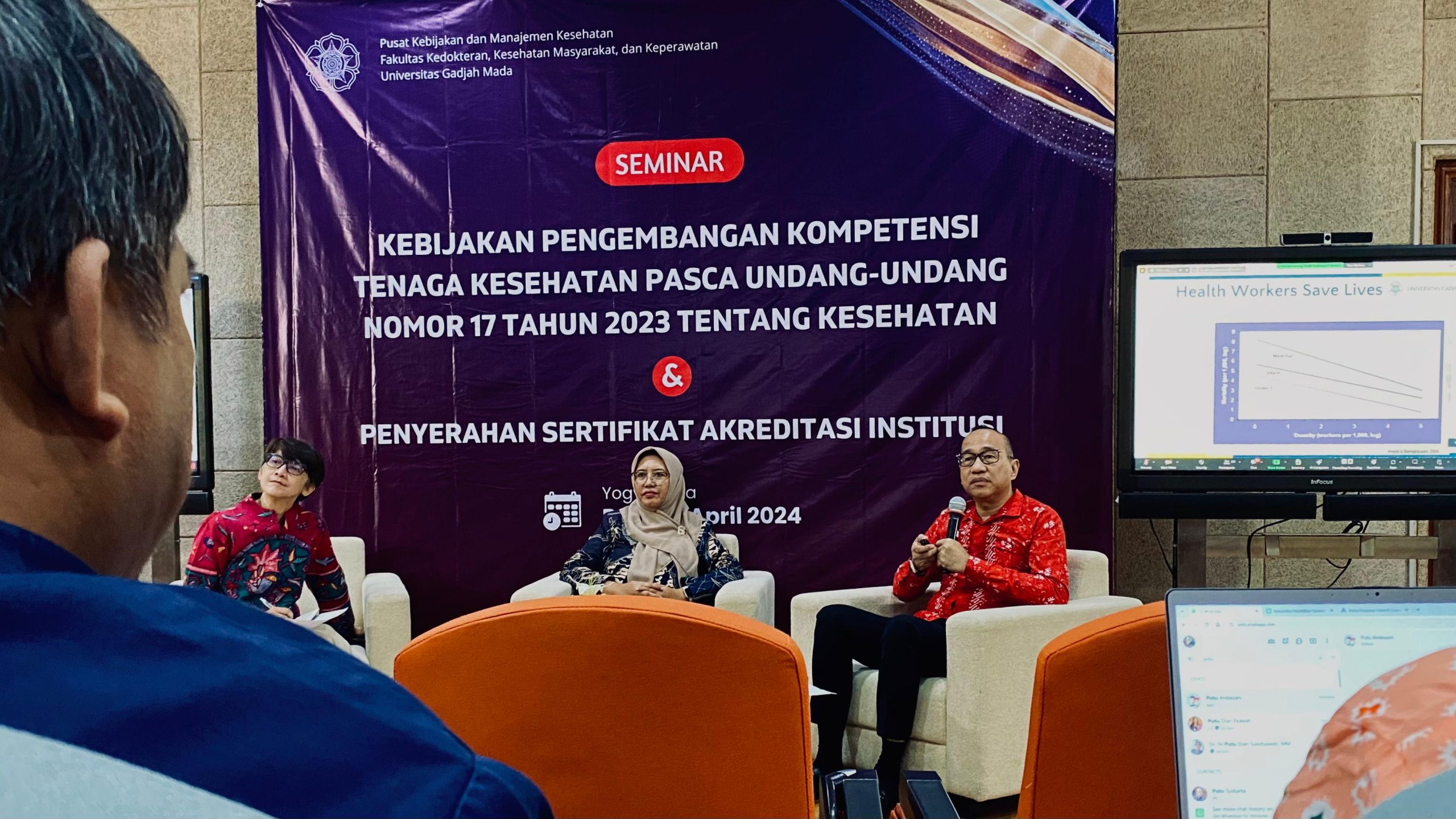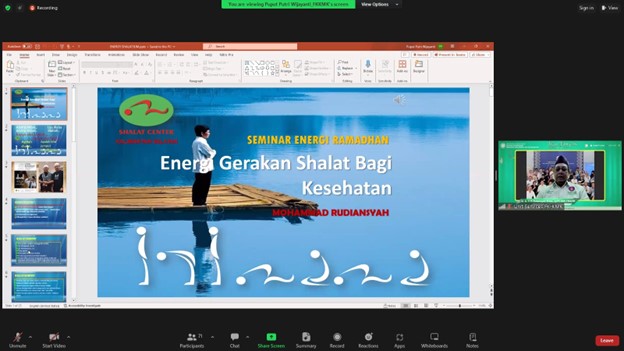FK-UGM. The shift in problems due to lifestyle and behavioral changes in society make health promotion efforts become an important program to create community development continued era. WHO data states that health development is carried Indonesia has managed to suppress or even eliminate some of the problems of public health. As well as a decrease in maternal and infant mortality in the last 20 years, the problem of vitamin A deficiency in Toddlers, poliomyelitis, malaria and other infectious diseases. However, new issues such as nutrition problems doubles (stunting, wasting well as obesity), Non-Communicable Diseases (diabetes mellitus, hypertension, cancer), all of which are associated with changes in behavior and lifestyle of individuals, groups and communities began to appear to the surface within a few years last.
Non Communicable Diseases (NCDs) are a threat morbidity and mortality as well as the productivity of a person which has implications on public health today. WHO says that this phenomenon as a “triple threat of disease”. In the era of the 1990s, the biggest cause of death and disease is an infectious disease such as Upper Respiratory Tract Infection (ARI), tuberculosis, diarrhea and others. But since 2010, the biggest cause of illness and death are stroke, heart disease, and diabetes. In this case, NCDs account for 60% of deaths worldwide per year, mostly in poor countries and developing countries. In fact, a risk factor for high blood pressure, obesity and alcohol use in adults in Indonesia is higher than the average of other countries in the region.
Various other health threats still can not be resolved. First, the issue of infant and child mortality gap between regions and between socio-economic level in Indonesia is still a challenge. Monitoring Nutritional Status (PSG) performed in all regencies / cities simultaneously in June – September 2016 showed the prevalence of infant nutritional status is very thin and thin (W / H) 11.1%, toddler nutritional status is very short and short (TB / U) 27.5% and Malnutrition (BB / U) 3.4%. Second, the threat of outbreaks of infectious diseases still result in mortality due to HIV / AIDS (per 100,000 population) tall. Thirdly, the threat of infectious diseases such as diarrhea and pneumonia, malnutrition and neonatal complications are still a major cause of infant and child mortality. In addition, the incidence of malaria, especially in eastern Indonesia 5 are the provinces of Papua, West Papua, East Nusa Tenggara, Maluku and North Maluku are still high.
Risk Factors for Non-Communicable Diseases
Health anywhere in the world shaped by several factors that influence each other namely: the demographic bonus, rapid urbanization, and the globalization of unhealthy lifestyles. In poor countries and developing countries, the behavior becomes the burden of non-communicable disease risk factors affected by socio-economic status. The group had lower socioeconomic status tend to consume alcohol and smoking, eat less fruit, vegetables, fish and fiber and eat more meat. Higher socioeconomic status tend to consume more fat, salt and fast food and not doing physical activity. In addition, low-income populations have a higher prevalence of smoking and low in alcohol consumption.
PTM risk factors associated with people’s lifestyle began to shift. First, lack of physical activity, for example, spend more time watching TV, playing games and for too long at the computer. This can lead to obesity risk factors. Second, changes in the diet of people in which there is a tendency to consume processed foods, ready-to-eat, high in sugar, salt and fat and less fibrous foods such as fruits and vegetables that can lead to indigestion. Third, the consumption of alcoholic beverages. The habit of consuming alcoholic beverages can cause organ damage and risk of death. Fourth, the habit of smoking. Smoking can cause various diseases, among them lung cancer, mouth cancer.
According to the WHO in 2013, the main factors contributing occurrence of PTM include social factors and behavioral factors were strongly associated with the culture. These factors are factors that can be changed and modified. Prevention and control of non-communicable diseases through a cultural approach is an effort that is expected to be well received as in accordance with the local lifestyle. This is a specific area of health promotion and protection (primary prevention) as well as the early diagnosis of health promotion. Research shows that health behavior intervention successfully increased physical activity and dietary behaviors (ie: increased consumption of fiber, fruits and vegetables and fat reduction).
Building a Healthy Paradigm
Health is the main dimensions of the Sustainable Development Goals (TPB). Objective 3 TPB in line with the definition of health promotion is “Ensure healthy lives and promote wellbeing for all at all ages”. As mentioned in Permenkes number: 74 2015 on Measures to Improve Health and Disease Prevention, that health promotion should be implemented in the form of: (1) the development of sound public health policy; (2) creating a conducive environment; (3) strengthening the movement of people; (4) the development of individual capabilities; and (5) realignment toward health care. Why this point is emphasized ?. Health can only be achieved with the existence of attachments and inter-sectoral action through community empowerment strategies, advocacy, and partnerships and supported with appropriate methods and media, the data is valid and accurate information, as well as optimal resource including human resources professional. Efforts and strategies used as a multiple intervention healthy behavior.
Currently, Indonesia still need to complete some unfinished agenda (Unfinished Agenda) in the Millennium Development Goals (MDGs) to realize the goal of sustainable development (Sustainable Development Goals) 2016-2030. The commitment is demanded Indonesia seeks earnestly to achieve sustainable development 15 years into the future. Among these are the direct nutritional problems on sustainable solutions, integration with improved access to food and agricultural production, Universal Health Coverage, deaths from non-communicable disease and tobacco control, drug abuse and alcoholism, death and injury traffic accidents, contamination and pollution of water, air, soil , handling crises and emergencies, gender equality as a cross-cutting issue and adolescents as an important actor of sexual and reproductive health.
The health paradigm to position health as a result of everyday activities and become a major part of a public health movement. Currently, the health paradigm emphasizes preventive and promotive aspects of empowering people to adopt healthy behaviors are performed consistently and continuously as well as the implementation of a comprehensive program through coordination across sectors. The principle of participation and empowerment is very important in mensukeskan implementation of public health programs. In this case, the promotional efforts of Health became a process of community empowerment through informing, influencing and helping the community to play an active role to support behavior change and the environment as well as maintaining and improving the health towards optimal health status. In addition, the success of the government (government) in the achievement of the health status can be seen when considering the health of all cross-sector as a key element in policy formulation.
Healthy Cities program such as the construction of parks, open spaces, green areas and adequate public transport, is also seen as capable of impacting on public health. In addition, the government is encouraging the establishment of the Community Movement Healthy Living (GERMAS) that basically wants to realize public health is optimized through an act of systematic and planned conducted jointly by all components of the nation with awareness, willingness and ability to adopt healthy behaviors to improve quality of life. GERMAS civilizing process requires active involvement of all walks of life ranging from individuals, families, businesses, community organizations, professional organizations, and academia.
The main challenge of the health promotion role in creating healthy life style is the implementation gap or lack of scientific evidence that is implemented, a lack of evidence of the application of the health impact of a policy, as well as the implementation of health promotion capacity constraints in some countries. In practice, health promotion was often faced with obstacles to socio-cultural that exist in society. In terms of government are faced with the principle of accountability that is output from the calculation of the allocation of resources and indicators of behavioral change that has not been understood by all components.
Considering the complexity of the civilizing efforts of a healthy life for the community, it is time the campus has a social responsibility to be the prime mover, the motor at the same facility at the same community in realizing the government’s public health status. The role of each profession can be maximized, ranging from: first, prepare a concept / input to national policy development in the field of health. Second, Strengthen networking (networking and partnership) between education, professional organizations, and government. Third, do research for policy development and embodies the concept – the most basic concept of a public health approach. Fourth, improve the capacity of community health workers so as to empower the community. As well as the fifth, as a control in the establishment and implementation of public health policies. (Wiwin / IRO)
Source: dr. Anung Sugihantoro, Kes, Director General of the Public Health Ministry of Health, the Scientific Oration: “Health Promotion To Achieve a Healthy Lifestyle in the Age of Sustainable Development Agenda”, Anniversary Faculty 71st, March 6, 2017.







